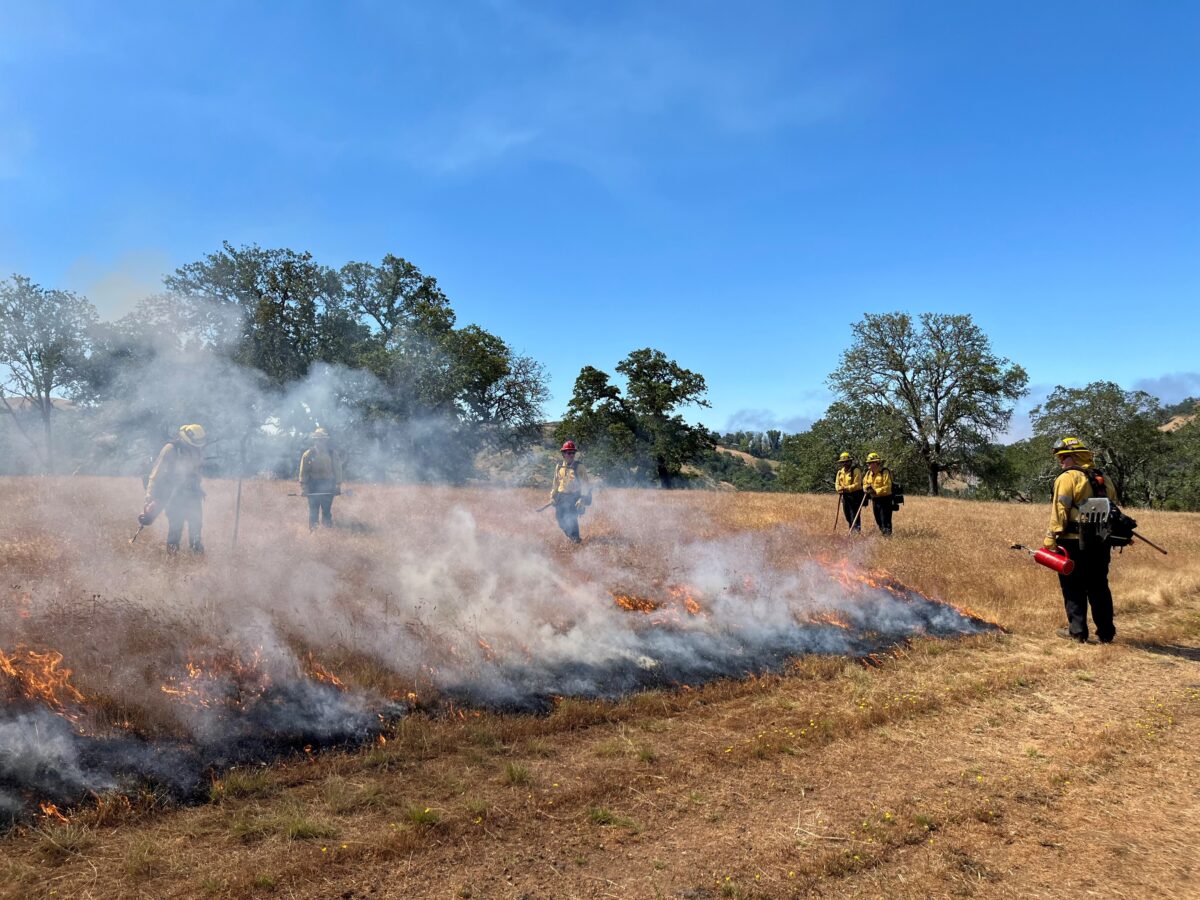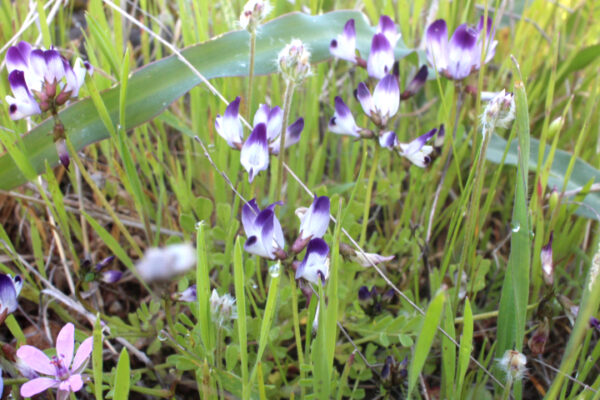Saddle Mountain Open Space Preserve Prescribed Burn

On June 10, Ag + Open Space and CAL FIRE completed a prescribed burn at our Saddle Mountain Open Space Preserve.
At 2.8 acres, this grassland burn was small but has the potential to have a big impact – its aim was to enhance habitat for a critically endangered plant, Clara Hunt’s milk vetch (Astragalus claranus), which is found in only six known locations clustered around the Sonoma/Napa county border.

Prior to European colonization, California’s grasslands were covered by native bunchgrasses and were routinely tended with fire by Indigenous people. Intact native grasslands are now rare in California but when you encounter one and look closely, the differences between them and non-native grasslands are striking. Bunchgrasses are so named because the grass stems and leaves are “bunched” together, creating a pattern on the landscape that leaves small gaps where native wildflowers can flourish. Most non-native annual grasses, by comparison, create an unbroken carpet of grass and accumulated dry, dead material, or thatch, which can quickly out-compete or exclude native species.
Clara Hunt’s milk vetch is a tiny native plant in the pea family. It favors rocky soils and open, uncrowded conditions. Competition from non-native grasses and built-up thatch is particularly damaging to its ability to grow, and routine monitoring has tracked declines in its numbers as non-native species have come to dominate and periodic burning has been excluded from its habitat. The population on the Saddle Mountain Preserve burned in the 2020 Glass Fire, and the following spring Ag + Open Space and California Fish and Wildlife biologists documented a twentyfold increase in its numbers on the Preserve, and similarly dramatic increases in other nearby burned areas. By re-burning this grassland five years after the Glass Fire, our intent is to maintain improved conditions to allow the milk vetch to thrive. Properly timed late springtime burning can not only remove thatch build up, but can effectively reduce non-native grasses by burning up their seeds before they fall (the native bunchgrasses, being deep rooted and perennial, simply re-grow after fire). Removing thatch and also knocking back invasive grasses like medusahead creates much more hospitable conditions for native plants, as well as for the animals and other life forms that depend on them.
This burn was conducted under a research permit from California Fish and Wildlife, and was completed by local Cal Fire crews with direction from Ag + Open Space’s fire ecologist and with Fish and Wildlife staff on site to observe burning conditions. It took less than an hour to burn this gentle, flat area, and we were delighted to have perfect burning conditions on the day of the burn and excellent results as observed immediately after. The real results won’t be visible until spring 2026 and we’re excited to see what happens! Click to watch a short video from the burn
